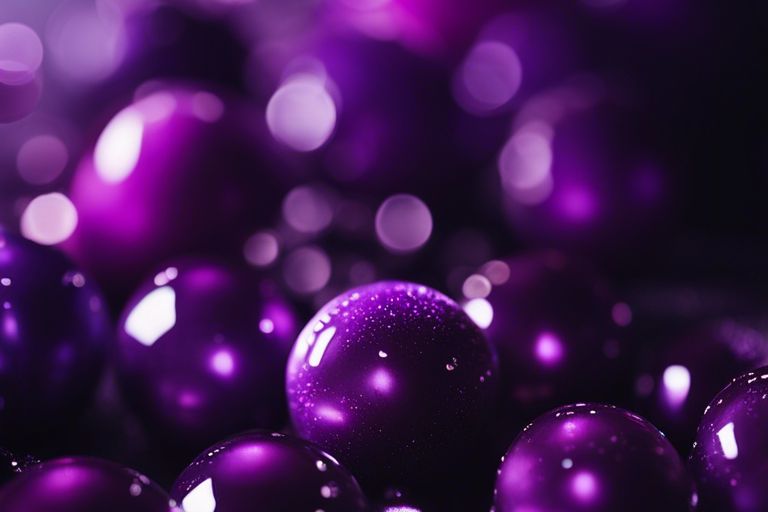What Does The Color Orange Mean?
It’s fascinating to explore the meaning behind the color orange. As you explore into the world of color psychology, you may be surprised to learn about the various connotations that orange carries. In this informative blog post, we will break down the significance of the color orange and how it can impact your emotions, perceptions, and environment. So, buckle up and get ready to broaden your understanding of this vibrant hue.

Key Takeaways:
- Warmth and energy: Orange is often associated with feelings of warmth, enthusiasm, and energy.
- Creativity and endurance: The color orange is believed to promote creativity and help with focus and endurance in tasks.
- Balance and passion: Orange is a color that represents a balance between the physical and spiritual realms, as well as passion and joy.
Origins of Orange
Before plunging into the cultural significance of the color orange, let’s explore its historical background.
Historical Background
One fascinating aspect of the color orange is its origins in nature. The word “orange” itself comes from the Old French “orenge,” which evolved from the Arabic word “naranj.” Oranges, the fruit from which the color gets its name, are believed to have originated in Southeast Asia. The fruit eventually made its way to Europe, where the vibrant hue of its peel left a lasting impression.
Cultural Significance
One interesting thing to note about the color orange is its cultural significance across different parts of the world. In Western cultures, orange is often associated with warmth, energy, and enthusiasm. It is a color that exudes creativity and a zest for life. In Hinduism, orange holds sacred symbolism, representing fire, purity, and spiritual awakening.
Origins of orange in culture can be traced back to ancient civilizations like Egypt and China. In Egypt, the color was associated with the sun god Ra, representing creation and rebirth. In China, orange is linked to spirituality and the divine realm, often worn by Buddhist monks as a symbol of wisdom and humility.
Symbolism and Associations
Warmth and Energy
With its vibrant hue reminiscent of a glowing sunset, orange is often associated with warmth and energy. This color can evoke feelings of excitement, enthusiasm, and passion. In your life, surrounding yourself with orange can help uplift your spirits and encourage a sense of vitality.
Creativity and Playfulness
Energy radiates from the color orange, making it a symbol of creativity and playfulness. When you incorporate orange into your surroundings, it can inspire you to think outside the box and approach tasks with a fresh perspective. Embracing the playful spirit of orange can infuse your life with joy and spontaneity.
Another way orange symbolizes creativity and playfulness is through its link to the Sacral Chakra in yoga and meditation practices. This chakra is associated with emotions, creativity, and pleasure, making orange a powerful color for fostering these aspects in your life.
Caution and Warning
Any powerful symbol has multiple dimensions, and orange is no exception. While orange is often seen as a color of warmth and creativity, it also carries connotations of caution and warning. In safety signage, orange is used to alert and draw attention to potential hazards. This duality in the symbolism of orange reminds you to approach situations with awareness and mindfulness.
It is vital to recognize the multifaceted nature of the color orange and the different messages it can convey in various contexts. By understanding the diverse associations of orange, you can harness its energy to enhance your life and navigate challenges with wisdom.

Color Theory and Psychology
Unlike simple aesthetics, color choices can have a profound impact on your emotions, behaviors, and perceptions. Understanding color theory and psychology can help you harness the power of colors to convey specific messages or evoke desired feelings.
Color Wheel and Harmony
Harmony in color theory refers to the relationships between colors and their arrangement on the color wheel. Complementary colors, like orange and blue, create a striking contrast that can draw attention. Analogous colors, such as orange, red, and yellow, are soothing and pleasing to the eye when used together. By considering color harmony, you can create visually appealing designs that resonate with your audience.
Emotional Responses and Moods
With colors playing a crucial role in influencing emotions, it’s important to understand the psychological impact of orange and other hues. Orange is often associated with warmth, energy, and enthusiasm. It can stimulate feelings of excitement and vitality, making it a popular choice in promoting creativity and passion.
To evoke specific emotional responses or moods, consider the psychological effects of colors on your audience. For instance, using orange in your branding can convey a sense of friendliness and approachability, making your brand more appealing to potential customers.
Branding and Marketing
Marketing strategies often leverage the psychological effects of colors to influence consumer behavior and perception. Orange is commonly used in branding to exude a sense of fun, playfulness, and affordability. Companies like Nickelodeon and Fanta incorporate orange into their logos and branding to appeal to a youthful and energetic audience.
Wheel orange into your marketing campaigns strategically to create a vibrant and dynamic image for your brand. Whether you’re aiming to stand out from competitors or create a memorable brand identity, the color orange can help you leave a lasting impression on your target market.

Orange in Nature
All around us, you can find the color orange in various elements of nature, bringing a sense of warmth and vibrancy to the world.
Fruits and Flowers
Orange fruits like oranges, mangoes, and peaches are not only delicious but also visually appealing. Their bright color often signifies ripeness and freshness, making them enticing to your senses. Flowers such as marigolds, lilies, and tulips display shades of orange, adding a cheerful touch to gardens and landscapes.
Sunsets and Landscapes
With the setting sun painting the sky in hues of orange and pink, sunsets are a breathtaking display of nature’s beauty. The warm tones create a sense of tranquility and remind you of the cycles of the day, bringing a peaceful end to your busy hours.
Next time you witness a stunning sunset, take a moment to appreciate the vastness of the sky and the soothing colors that surround you, offering a moment of reflection and gratitude.
Animals and Insects
An array of animals and insects flaunt shades of orange in their feathers, fur, or wings. From vibrant monarch butterflies to majestic tigers, the color orange often serves as a warning in nature, signaling toxicity or danger. However, it can also be a symbol of strength and resilience in the animal kingdom.
Orange hues in nature are not just visually appealing but also hold symbolic meanings, reflecting aspects of life such as ripeness, warmth, danger, and resilience. Whether you’re admiring a sunset, savoring a juicy orange, or observing a tiger in the wild, the color orange in nature never fails to captivate your senses and evoke a sense of wonder.
Orange in Art and Design
Art Movements and Styles
To artists, orange can represent energy, warmth, and creativity. In art history, the color orange has been used in various movements and styles to evoke different emotions and themes. For example, in Impressionism, artists like Claude Monet used orange tones to capture the light and atmosphere of a scene, creating a sense of vibrancy and movement in their paintings.
Graphic Design and Logos
Designers often use orange in graphic design to command attention and evoke a sense of enthusiasm. Orange is frequently used in logos to convey a friendly and playful brand image. The color can also signify innovation and modernity, making it a popular choice for companies looking to stand out in a crowded market.
When incorporating orange into designs, it’s crucial to consider the psychological impact it has on the viewer. Orange can stimulate feelings of excitement and warmth, making it a versatile choice for brands looking to make a bold statement.
Fashion and Textiles
Orange has a long history in the world of fashion and textiles. From vibrant tangerine shades to earthy terracotta tones, orange garments can convey a range of emotions and styles. In fashion, orange is often associated with creativity, energy, and adventure, making it a popular choice for activewear and casual clothing.
Graphic patterns featuring orange hues can add a dynamic and modern touch to textiles. Whether in subtle accents or bold prints, orange can transform an outfit or a space, infusing it with a sense of liveliness and excitement.
Orange in Different Cultures
Eastern and Western Traditions
Keep in mind that the color orange can have different meanings in various cultures. In Eastern traditions, such as Hinduism and Buddhism, orange is often associated with saffron robes worn by monks and represents renunciation, courage, and sacrifice. On the other hand, in Western cultures, orange is often linked to warmth, enthusiasm, and creativity.
Spiritual and Religious Significance
With regard to spirituality and religion, orange can hold various significances. Traditions such as Hinduism associate orange with the sacral chakra Svadhisthana, symbolizing creativity, passion, and joy. In Buddhism, the color orange can embody the idea of transformation and the turning of one’s own thoughts and perceptions.
Traditions that value mindfulness and self-awareness often use orange to stimulate emotions through its warmth and vibrancy. This color is believed to encourage enthusiasm and a sense of community, making it a significant hue in various spiritual practices.
National and International Symbolism
To understand the symbolism of the color orange on a national and international level, it is necessary to recognize its different connotations. In the Netherlands, orange represents the Dutch Royal Family and national pride. On the international stage, orange is a prominent color during the Orange Revolution in Ukraine, symbolizing unity and political change.
It is fascinating to see how a color like orange can carry such diverse meanings depending on the cultural and historical context in which it is used. Whether you associate it with spiritual growth, creativity, or political movements, orange is undeniably a color that evokes strong emotions and connections.
Final Words
To wrap up, understanding the meaning of the color orange can bring a new perspective to how you perceive the world around you. From warmth and energy to creativity and enthusiasm, the color orange carries a multitude of meanings. Whether you incorporate it into your wardrobe, decor, or even your daily mindset, embracing the color orange can add a vibrant and positive touch to your life. So next time you see the color orange, remember the depth of its symbolism and how it can enhance your experiences.
Q: What does the color orange symbolize?
A: The color orange is often associated with warmth, happiness, energy, creativity, and enthusiasm. It can also represent excitement, stimulation, and success.
Q: In which areas is the color orange commonly used?
A: Orange is frequently used in designs related to food, sports, and adventure. It is also often utilized in advertising to draw attention and create a sense of urgency or excitement.
Q: How does the color orange influence emotions and behavior?
A: Orange is believed to promote a sense of optimism, motivation, and social interaction. It can also increase appetite and stimulate activity, making it a popular choice for restaurants and workout spaces.






